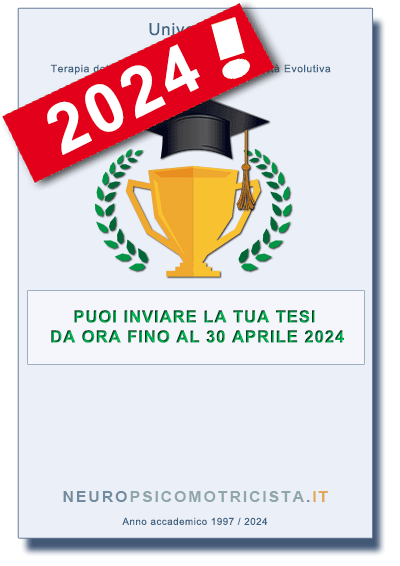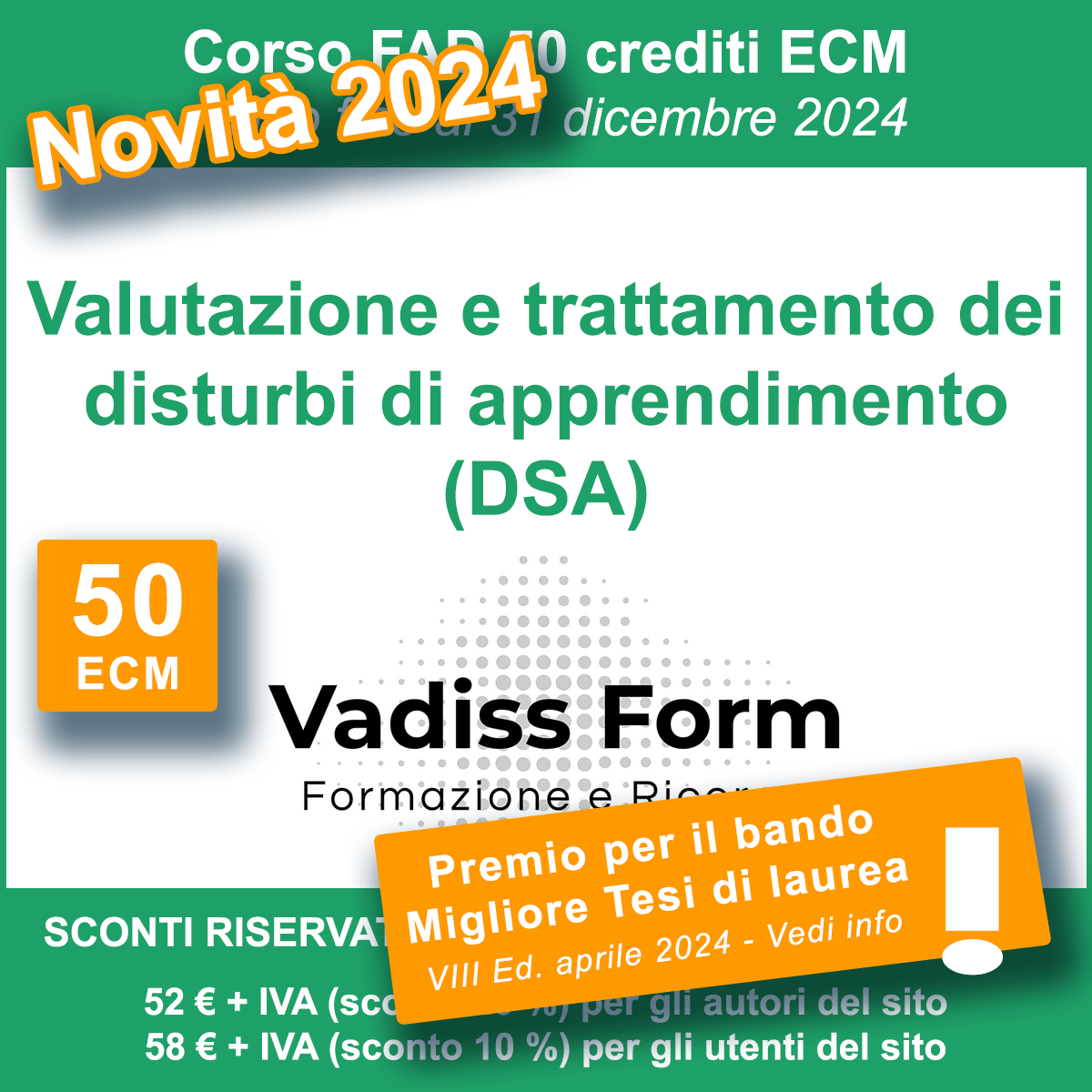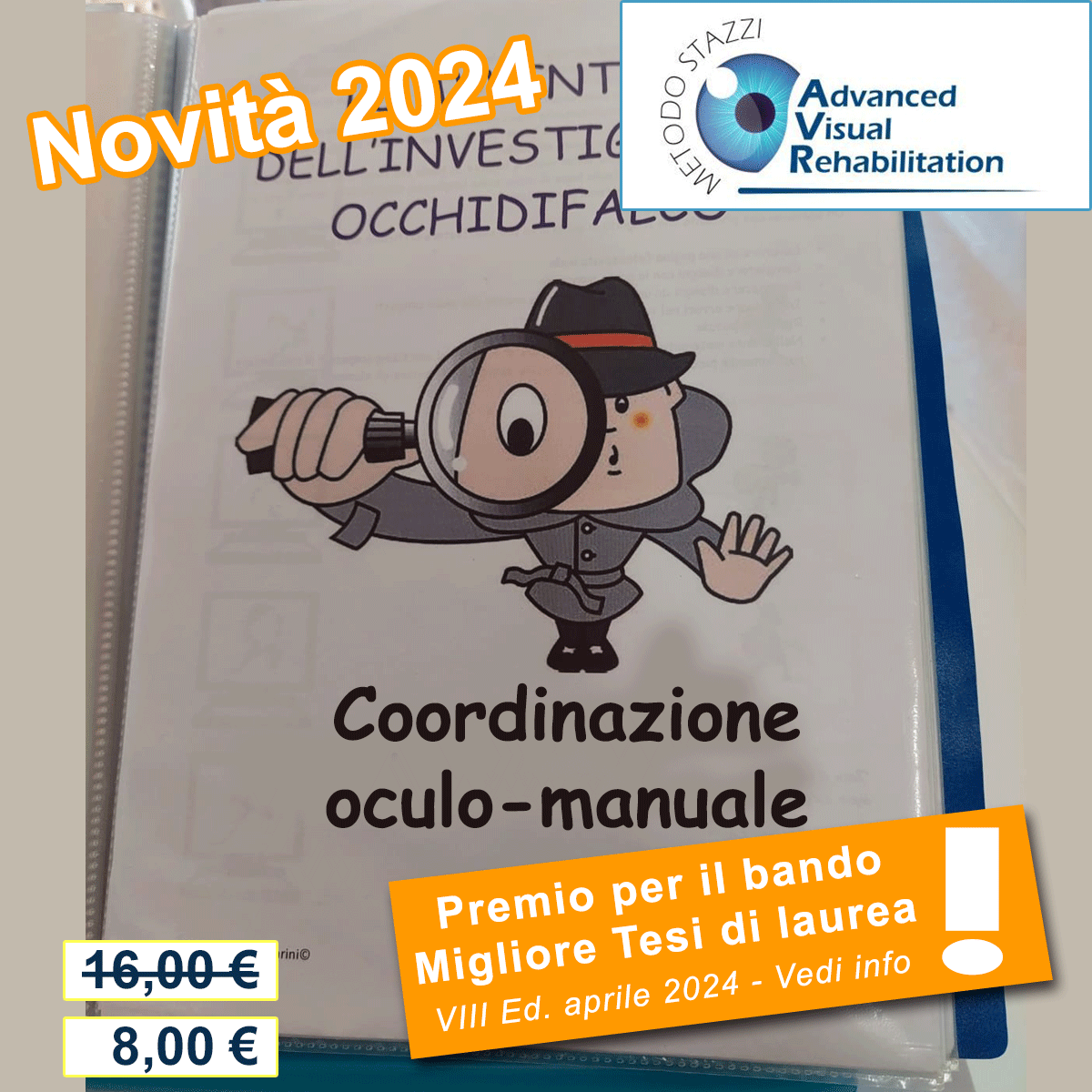BIBLIOGRAFIA - Alla ricerca di una spiegazione motoria delle difficoltà comunicative nell’autismo
-
Allen G, Chourchense E (2003). Differential effects on cognitive and motor functions in the cerebellum: an fMRI study of autism. The American Journal of Psychiatry, 160: 262-273.
-
Ambrosini C, De Panfilis D, Wille AM (1999). La psicomotricità. Corporeità e azione nella costruzione dell'identità. Xenia Edizioni, Milano.
-
American Psychiatric Association (2000), Diagnostic and Statistical Manual of Mental Disorders (DSM IV-TR). Edizione italiana Milano: Masson (2002).
-
Armstrong DF (1999). Original Signs: Gesture, sign, and the source of language. Gallaudet University Press, Washington.
-
Baron-Cohen S, Lombardo MV, Auyeung B, Ashwin E, Chakrabarti B, Knickmeyer R (2011). Why Are Autism Spectrum Conditions More Prevalent in Males? PlosBiology Journal, 9: e1001081.
-
Baron-Cohen S (2004). The cognitive neuroscience of autism. J Neurol Neurosurg Psychiatry, 75:945–948.
-
Bauman ML, Kemper TL (1994). Neuroanatomic observations of the brain in autism. The neurobiology of autism. Baltimore, Johns Hopkins Press: 119-145.
-
Bauman ML (1992). Motor dysfunction in autism. Movement disorders in neurology and Neuropsychiatry. Boston, MA, Blackwell Scientific: 658-661
-
Bebko, J. M., Weiss, J. A., Demark, J. L., & Gomez, P. (2006). Discrimination of temporal synchrony in intermodal events by children with autism and children with developmental disabilities without autism. Journal of Child Psychology and Psychiatry, 47(1): 88–98.
-
Bookheimer S (2002). Functional MRI of language: new approaches to understanding the cortical organization of semantic processing. Annual Review of neuroscience, 25: 151-188.
-
Briggs GG, Nebes RD (1975). Patterns oh hand preference in a student population. Cortex, 11: 230-238.
-
Broca P (1861). Remarques sur Ie siege de Ia faculte du langage articule; suivies d'une observation d'aphemie. Bulletin de la Societe anatomique de Paris, 6: 330-357.
-
Buccino G, Binkofski F, Fink GR, Fadiga L, Fogassi L, Gallese V, Seitz RJ, Zilles K,
-
Rizzolatti G, Freund HJ (2001). Action observation activates premotor and parietal areas in a somatotopic manner: an fMRI study. European Journal of Neuroscience, 13: 400-404
-
Burling R (1999). Motivation, conventionalization, and arbitrariness in the origin of language. In: King BJ (Ed), The origins of language: what nonhuman primates can tell us. School of American Research Press, Santa Fe, NM: 307–350.
-
Campione C (2011). Gesto e parlato: caratteristiche funzionali dei sistemi responsabili delle loro interazioni. Dottorato di ricerca in Neuroscienze, Università degli Studi di Parma.
-
Cattaneo L, Rizzolatti G (2009). The mirror neuron system. Archives of Neurology, 66: 557- 560.
-
Cattaneo L, Fabbri-Destro M, Boria S, Pieraccini C, Monti A, Cossu G, Rizzolatti G (2007). Impairment of actions chains in autism and its possible role in intention understanding. Proceedings of the National Academy of Sciences of United States of America, 104: 17825-17830.
-
Charman T, Swettenham J, Baron-Cohen S, Cox A, Baird G, Drew A (1997). Infants with autism: an investigation of empathy, pretend play, joint attention, and imitation. Dev Psychol 33: 781-9.
-
Clifford, S., Young, R., & Williamson, P. (2007). Assessing the early characteristics of autistic disorder using video analysis. Journal of Autism and Developmental Disorders, 37(2): 301–313.
-
Cohen DJ, Volkmar FR (2004). Autismo e disturbi generalizzati dello sviluppo. Diagnosi e assesment. Vannini editrice: Brescia.
-
Cohen DJ, Volkmar FR (2004). Autismo e disturbi generalizzati dello sviluppo. Strategie e tecniche di intervento, Vannini editrice: Brescia
-
Corballis MC (2009). Language as gesture. Human Movement Science, 8: 556-565.
-
Corballis MC (2002). From hand to mouth: the origins of language. Princeton University Press, Princeton.
-
Coude G, Ferrari PF, Roda F, Maranesi M, Borelli E, Veroni V, Monti F, Rozzi S, Fogassi L (2011). Neurons controlling voluntary vocalization in the macaque ventral premotor cortex. PLoS One, 6: e26822.
-
Courchesne E, Karns CM, Davis HR, Ziccardi R, Carper RA, Tigue ZD, Chisum HJ, Moses P, Pierce K, Lord C, Lincoln AJ, Pizzo S, Schreibman L, Haas RH, Akshoomoff NA, Courchesne RY (2001). Unusual brain growth patterns in early life in patients with autistic disorder: an MRI study. Neurology, 24: 245-254
-
Dawson G, Osterling J, Meltzoff AN, Kuhl P (2000). Case study of the development of an infant with autism from birth to 2 years of age. Journal of Applied Developmental Psychology, 21: 299-313.
-
Dennis M (1991). Frontal lobe function in childhood and adolescence: A heuristic for assessing attention regulation, executive control, and the intentional states important for social discourse. Developmental Neuropsychology, 7: 327-358
-
Donald M (1991). Origins of the modern mind. Harvard University Press, Cambridge.
-
Ejiri K (1998). Synchronization between preverbal vocalizations and motor actions in early infancy. I: Pre-canonical babbling vocalizations synchronize with rhythmic body movements before the onset of canonical babbling. Shinrigaku Kenkyu: The Japanese journal of psychology, 68: 433-440.
-
Ellis Weismer S, Lord C, Esler, A. (2010). Early language patterns of toddlers on the autism spectrum compared to toddlers with developmental delay. Journal of Autism and Developmental Disorders, 40(10): 1259–1273.
-
Ferrari PF, Gallese V, Rizzolatti G, Fogassi L (2003). Mirror neurons responding to the observation of ingestive and communicative mouth actions in the monkey ventral premotor cortex. European Journal of Neuroscience, 17: 1703-1714.
-
Fogassi L, Ferrari PF, Gesierich B, Rozzi S, Chersi F, Rizzolatti G (2005). Parietal lobe: from action organization to intention understanding. Science, 308: 662-667.
-
Gallagher Hl, Frith CD (2004). Dissociable neural pathways for the perception and recognition of expressive and instrumental gestures. Neuropsychologia, 42: 1725-1736.
-
Gallese V, Fadiga L, Fogassi L, Rizzolatti G (1996). Action recognition in the premotor cortex. Brain, 119: 593-609.
-
Gentilucci M, Campione GC (2011). Do postures of distal effectors affect the control of actions of other distal effectors? Evidence for a system of interactions between hand and mouth. PLoS One 6(5): e19793.
-
Gentilucci M, Dalla Volta R (2008). Spoken language and arm gesture are controller by the same motor control system. Quarterly Journal of Experimental Psychology (Colchester), 61: 944-957.
-
Gentilucci M, Corballis MC (2006). From manual gesture to speech: a gradual transition. Neuroscience & Biobehavioral Reviews, 30: 949-960
-
Gentilucci M, Santunione P, Roy AC, Stefanini S, (2004a). Execution and observation of bringing a fruit to the mouth affect syllable pronunciation. European Journal of Neuroscience, 19: 190-202.
-
Gentilucci M, Stefanini S, Roy AC, Santunione P (2004b). Action observation and speech production: study on children and adults. Neuropsychologia, 42: 1554-1567.
-
Gentilucci M (2003). Grasp observation influences speech production. European Journal of Neuroscience, 17: 179-184
-
Gentilucci M, Benuzzi F, Gangitano M, Grimaldi S (2001). Grasp with hand and mouth: a kinematic study on healthy subjects. Journal of Neurophysiology, 86: 1685-1699
-
Gernsbacher MA, Sauer EA, Geye HM, Schweigert EK, Hill Goldsmith H (2008). Infant and toddler oral- and manual-motor skills predict later speech fluency in autism. Journal of Child Psychology and Psychiatry, 49:43-50.
-
Geschwind DH (2011). Genetics of autism spectrum disorders. Trends in cognitive neuroscience,15: 409-416
-
Givon T (1995). Functionalism and grammar. Benjamins, Philadelphia.
-
Grattan LM, Bloomer R, Archambault FX, Eslinger PJ (1990). Cognitive and neural underpinnings of empathy. Clinical Neuropsychologist, 4: 279.
-
Hallmayer J, Cleveland S, Torres A, Phillips J, Cohen B, Torigoe T, et al. (2011). Genetic heritability and shared environmental factors among twin pairs eith autism. Arch. Gen. Psychiatry, 68: 1095-1102
-
Hanlon RE, Brown JW, Gerstman LJ (1990). Enhancement of naming in nonfluent aphasia through gesture. Brain and Language, 38: 298-314
-
Happé F, Frith U (1996). The neuropsychology of autism. Brain 119: 1377-1400.
-
Heil KM, Schaaf C (2012). The genetics of autism spectrum disorders. A guide for clinicians. Current psychiatry reports, 15: 334
-
Hill EL (1998). A dyspraxic deficit in specific language impairment and developmental coordination disorder? Evidence from hand and arm movements. Developmental medicine and child neurology,40: 388-395.
-
Hobson RP, Lee A (1989). Emotion-related and abstract concepts in autistic people: evidence from the British Picture Vocabulary Scale. Journal of Autism Developmental Disorders, 19: 601-623
-
Idring S, Rai D, Dal H, Dalman C, et al. (2012). Autism Spectrum Disorders in the Stockholm Youth Cohort: Design, Prevalence and Validity, PLos One,7.
-
Ingersoll B, Lalonde K (2010). The impact of object and gesture imitation training on language use in children with autism spectrum disorder. Journal of Speech, Language and Hearing Research, 53: 1040-1051.
-
Ingersoll B, Lewis E, Kroman E (2007). Teaching the Imitation and Spontaneous Use of Descriptive Gestures in Young Children with Autism Using a Naturalistic Behavioral Intervention. Journal of Autism and Developmental Disorders, 37: 1446-1456.
-
Ingersoll B, Scheribman L (2006). Teaching Reciprocal Imitation Skills to Young Children with Autism Using a Naturalistic Behavioral Approach: Effects on Language, Pretend Play, and Joint Attention. Journal of Autism and Developmental Disorders, 36: 487-505
-
Ingman, M., Kaessmann, H., Paabo, S., Gyllensten, U., 2000. Mitochondrial genome variation and the origin of modern humans. Nature, 408:708–713.
-
Iverson JM, Wozniak RH (2007). Variation in vocal-motor development in infant siblings of children with autism. Journal of Autism and Developmental Disorders, 37:158-170.
-
Iverson JM, Thelen E (1999). Hand, mouth, and brain: The dynamic emergence of speech and gesture. Journal of Consciousness Studies, 6, 19-40.
-
Kerbel D, Grunwell P (1998). A study of idiom comprehension in children with semantic-pragmatic difficulties. Part I: Task effects on the assessment of idiom comprehension in children. Part II: Between-groups results and discussion.
-
International Journal of Communication Disorders, 33: 1-44.
-
Kogan MD, Blumberg SJ, Schieve LA, Boyle CA, Perrin JM, Ghandour RM, Singh GK, Strickland BB, Trevathan E, van Dyck PC (2009). Prevalence of parent-reported diagnosis of autism spectrum disorder among children in the US, 2007. Pediatrics, 124: 1395-1403.
-
Koterba E, Leezenbaum NV, Iverson JM (2012). Object exploration at 6 and 9 months in infants with and without risk for autism. Autism: the international journal of research and practice. Published online at: htt://aut.sagepub.com/content/early/2012/11/20/1362361312464826
-
Leary MR, Hill DA (1996). Moving on: autism and movement disturbance. Mental Retardation, 34:39–53.
-
Leoni AF, Maturi P (2002). Manuale di Fonetica. Carrocci, Roma.
-
Liberman AM (1993). Some assumptions about speech and how they changed. In Haskins Laboratories Status Report on Speech Research, 113: 1–32.
-
Liberman, AM, Mattingly IG (1989). A specialization for speech perception. Science, 243: 489–494.
-
Liberman AM, Mattingly IG (1985). The motor theory of speech perception revised. Cognition, 21: 1–36.
-
Liberman AM, Cooper FS, Shankweiler DP, Studdert-Kennedy M (1967). Perception of the speech code. Psychological Review, 74: 431-461.
-
Li X, Zou H, Brown WT (2012). Genes associated with autism spectrum disorder.Brain Research Bulletin, 88:543-552.
-
Linee guida nazionali (2011). Il trattamento dei disturbi dello spettro autistico nei bambini e negli adolescenti.
-
Luyster R, Gotham K, Guthrye W, Coffing M, Petrak R, Bishop S, Esler A, Hus V, Oti R, Richler J, Risi S, Lord C (2010). ADOS modulo Toddler: un nuovo modulo di una misura diagnostica standardizzata per i disturbi dello spettro autistico. University of Michigan, Autism and communication disorders center, 8:375-406.
-
McCleery JP, Tully L, Slevc LR, Schreibman L (2006). Consonant production patterns of young severely language delayed children with autism. Journal of Communication Disorders, 39:217–231.
-
McNeill D (1992). Hand and mind: what gestures reveal about thought. Chicago University Press, Chicago.
-
Molteni M, Mani E, Pellegri A (2012). I disturbi dello Spettro Autistico: dalla suddivisione categoriale ad una descrizione psicopatologica dimensionale. Psichiatria dell'infanzia e dell'adolescenza, 79: 487-497.
-
Nardocci F, Andruccioli M (2010) . Quaderni PRIA: quaderno n 3 , a cura di Assessorato Salute Mentale Regione Emilia Romagna.
-
Newschaffer CJ, Croen LA, Fallin MD, et al. (2012). Infant sibilings and the investigation of autism risk factors. Journal of Neurodebelopmental Disorders, 4:7.
-
Oller DK, Eilers RE (1988). The role of audition in infant babbling. Child Development, 59:441–466.
-
Ploog, D (2002). Is the neural basis of vocalisation different in non-human primates and Homo sapiens? In: Crow TJ (Ed), The speciation of modern Homo sapiens. Oxford University Press, Oxford: 121–135.
-
Rizzolatti G, Fabbri-Destro M (2010). Mirror neurons: from discovery to autism. Experimental Brain Research, 200: 223-237.
-
Rizzolatti G, Fogassi L, Gallese V (2001). Neurophysiological mechanisms underlying the understanding and imitation of action. Nature Reviews Neuroscience, 2: 661-670.
-
Rizzolatti G, Arbib MA (1998). Language within our grasp. Trends in Neuroscience, 21: 188-194.
-
Rizzolatti G, Fadiga L, Gallese V, Fogassi L (1996). Premotor cortex and the recognition of motor actions. Cognitive Brain Research, 3: 131–141.
-
Rogers SJ, Hepburn SL, Stackhouse T, Wehner E (2003). Imitation performance in toddlers with autism and those with other developmental disorders. J Child Psychol Psychiatry 44: 763-81.
-
Rogers D (1992). Motor disorder in psychiatry: towards a neuropsicological psychiatry. New York: Wiley.
-
Rogers D (1990). Psychiatric consequences of basal ganglia disease. Seminars in Neurology, 10: 262-256.
-
Saint Georges C, Cassel RS, Cohen D, Chetouani M, Laznik MC, Maestro S (2010). What studies of family home movies can teach us about autistic infants: a literature review. Research in Autism Spectrum Disorders, 4: 355–366.
-
Scalzeri C, Esposito G,Venuti P (2011). Indicatori diagnostici dell'autismo nei primi due anni di vita, l'analisi del movimento. Autismo e disturbi dello sviluppo, 9: 193-207.
-
Sheinkpof D, Iverson JM, Rinaldi ML, Lester BM (2012). Atypical cry acoustics in 6-month-old infants at risk for autism spectrum disorder. Autism research: official journal of the International Society for Autism Reserach 5: 331,339
-
Smith V, Mirenda P, Zaidman-Zait, A (2007). Predictors of expressive vocabulary growth in children with autism. Journal of Speech Language and Hearing Research, 50:149–160.
-
Società italiana di Neuropsichiatria dell'Infanzia e dell'Adolescenza (2005). Linee guida per l'autismo. Trento: Erickson.
-
Stefanatos GA, Baron IS (2011). The ontogenesis of language impairment in autism: a neuropsychological perspective. Neuropsychology Review, 21:252-270.
-
Teitelbaum P, Teitelbaum O, Nye J, Fryman J, Maurer RG (1998). Movement analysis in infancy may be useful for early diagnosis of autism. PNAS USA, 95:13982-13987.
-
Vihma M, Croft W (2007). Phonological development: toward a "radical" templatic phonology. Linguistics, 45:683–725.
-
Volkmar FR, Paul R, Cohen DJ (2008). Autismo e disturbi pervasivi dello sviluppo. Diagnosi, sviluppo, neurobiologia e comportamento. Brescia: Vannini.
-
Williams E, Thomas K, Sidebotham H, et al. (2008). The prevalence and characteristics of autism spectrum disorders in the ALSPAC cohort, Dev Med Child Neurol, 23: 67-72.
-
Wordl Health Organization (1992). ICD-10, International Statistical Classification of Disease, injuries and cause of death (10° revision). Geneva.
- Zwaigenbaum L, Bryson SE, Rogers T, Roberts W, Brian J, Szatmari P (2005). Behavioral manifestations of autism in the first year of life. International Journal of Developmental Neurosciences, 23: 143–152.
Indice |
| All’inizio era il verbo? No, all’inizio era l’azione! Alla ricerca di una spiegazione motoria delle difficoltà comunicative nell’autismo: Riassunto; Abstract |
| INTRODUZIONE: premesse; scopi. |
|
| CONCLUSIONI |
| BIBLIOGRAFIA |
| RINGRAZIAMENTI |
| Tesi di Laurea di: Valentina DEL BELLO |
































